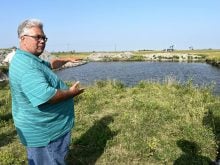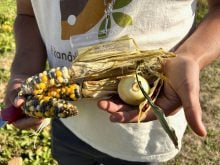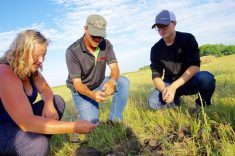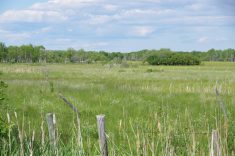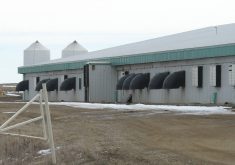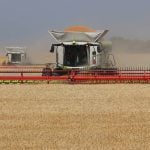Manitoba’s Little Saskatchewan River valley is unique on the Prairie landscape. It is a beautiful glacial meltwater valley that originates in Riding Mountain National Park and meanders south over 120 kilometres, where it meets the Assiniboine River just upstream of Brandon.
Recently, the federal government announced that the Assiniboine West Watershed District (AWWD) will receive a significant grant to support our work in the Little Saskatchewan River valley and surrounding watershed.
This program will provide AWWD with needed resources to study and improve the watershed and to maintain and enhance its ecological health. The district is, and always will be, a volunteer incentive-based soil and water conservation organization collaborating with interested landowners.
Read Also

The new spin on farm legacy
Farmers are starting to think differently about the future of their farms in Western Canada. What does this mean for the next generation and farm succession planing?
Cumulatively, our ecological corridor project covers just over one million acres of mostly privately owned land and national park. Most of the land is overseen by seven local governments (six rural municipalities and the Town of Minnedosa), and two First Nations communities. It includes small parts of another four rural municipalities.
Because of its steep slopes, the farming community left the valley mostly undeveloped compared to nearby land more conducive to annual cropping.
An ecological corridor, by definition, is a geographical area recognized for unique ecological importance or conditions. Its ecological importance is amplified by wildlife use, natural vegetation features that set it apart from the surrounding landscape, or a combination of both.
As a result of the intact habitat along the slopes, wildlife spends a good percentage of their life cycle there. If you wanted to highlight intact habitats and the wildlife that rely upon it, a drive into the Little Saskatchewan River valley would be exactly the place you might visit.
In many respects, the valley is already an ecological corridor.
Part of Parks Canada’s mandate is to support the protection of Canada’s natural heritage for future generations, and it is widely understood that protected areas must be connected to networks of healthy landscapes to be effective in their protection.
It is not a real stretch to understand why Parks Canada would develop a program like this. The National Program for Ecological Corridors is a key part of Parks Canada’s strategy to halt and reverse biodiversity loss and help species adapt to climate change.
AWWD wants this too, and we believe that our member municipalities and landowners do as well. Healthy landscapes are biologically diverse, and they create the foundation for healthy waters, healthy wildlife and healthy people.
Our project will last just over 12 months, ending in February 2026. We will have one field season to collect information, including past and present details on the terrestrial and aquatic plants and animals in the watershed.
Much like a person going to the doctor and undertaking a physical, we will measure key factors of the watershed’s health. This is why the collection of water and soil metrics, plant and animal population abundance, among other measurements, are so vital for us.
Some push back has been received on the project by those concerned that this will or could result in efforts to limit agricultural practices, such as use of herbicide or certain practices around waterways.
It will not. We do not work in the regulatory world.
As the saying goes, you cannot manage what you do not measure. This is true in natural resource management, just like it is in the business world. We will start with a state of the watershed analysis and, from there, work to engage local stakeholders and communities, including their priorities and what works from local, practical grassroots perspectives.
The LSR Ecological Corridor project, like all the other programs we deliver, will help landowners and local governments prioritize soil, water, and habitat improvement projects. There are no caveats, no selling of development rights, just straight forward soil and water programming, like AWWD has done for more than a quarter-century.
If you are interested in learning more about the project, contact AWWD at [email protected].
Ryan Canart is the general manager of the Assiniboine West Watershed District.




